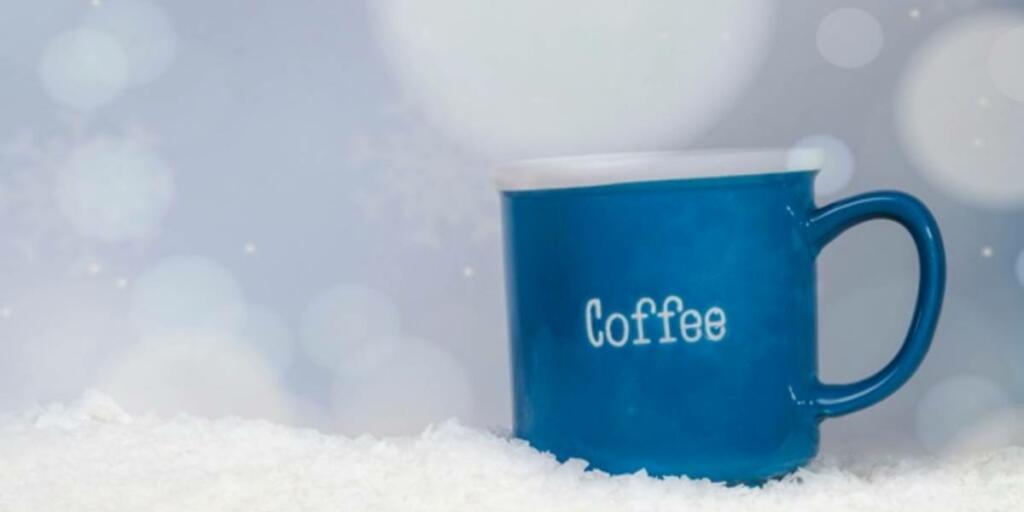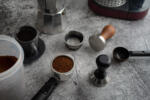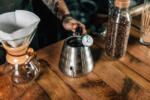Wouldn’t it be cool to walk into a coffee shop and order a single origin coffee from a 2003 harvest? Imagine a whole menu of exceptional quality vintage coffee beans from past harvests for you to choose from. It would certainly be amazing, but is it possible?
So far it was common knowledge amongst the coffee community that coffee beans have a certain life span. But these days, that seems to be a perception of the past thanks to cryogenics. Cryogenics is “a branch of physics that deals with the production and effects of very low temperatures.”

So let’s have a look at how cryogenics can affect the lifespan of coffee beans.
Origins of Frozen Coffee Beans
George Howell is the man responsible for setting many standards in the speciality coffee industry since the 1970s. He began freezing coffee beans in the mid-200s and together with theoretical chemist Dr. Chris Hendon presented vintage coffees from 2012 at the 2017 Re:Co event.
That same year, Kyle Ramage became the 2017 U.S. Barista Champion. During his winning performance he used a Panama coffee which he froze to -79° with the help of dry ice.
Ever since then there have been a few roasters around the world freezing coffee and selling it at a later date. Some examples are the Freezer Friday archival release coffee beans by Passenger coffee and the wholesale frozen coffee beans by Ona Coffee.
Note: this is different than aged coffee using the barrel method.
Let’s find out a bit more about the idea behind frozen coffee.
Green vs. Roasted Coffee
Coffee can be frozen at very low temperatures whether it’s in the green or the roasted stage. Green coffee refers to coffee beans that have been picked from the harvest without being roasted. Roasted beans are the coffee beans that have been roasted and have the distinct brown colour we all know.
Freezing Green Beans
The idea is that freezing green coffee beans will slow down their aging. According to Hendon “For every 10 ºC you cool something down, most of the processes occurring in the bean occur at half the rate. So cooling of coffee should prevent chemical reactions that occur over time, by making them proceed extremely slowly.
An important variable to be aware of is the method of freezing the coffee beans. Green coffee contains a small quantity of water which means this will condense in any moist areas such as fridges and freezers.
To avoid green beans releasing their water content, it’s best to seal them in vacuum bags before putting them in the freezer. Something else to note is that even though freezing green coffee can preserve its life for many years, it can come at a costly price for the green coffee importers or the roasters, so it’s important to do the math that’s best for any given business.
Freezing Roasted Beans
When it comes to freezing roasted coffee beans there are other variables that come to play in comparison to freezing green coffee beans. Hugh Kelly of Ona Coffee’s Research and Development team explains that “the process of freezing coffee involves putting a roasted bean into a frozen state or freezing the cell wall structure of the bean.”
By freezing roasted coffee beans, the roasters lock the characteristics of those beans and preserve them until the time comes to grind and brew them. This process actually helps get an even and balanced extraction.
For example, let’s think about grinding roasted beans for espresso. During a shift in a coffee shop the grinder is always on and evidently it becomes hot from the use. This heat can cause damage to the beans which won’t be ground evenly causing an uneven extraction.
If the same beans came straight out of the freezer, it would be easier to grind them and achieve an even extraction as the temperature of the bean would protect it from the heat of the grinder.
However, it’s also worth noting that the freezing process stops the aging of the coffee bean. Roasters should know what is the peak season of their coffee beans, that is when is the best moment for those beans to be roasted in order to get the best out of their flavor characteristics. Otherwise, if they freeze prematurely the coffee won’t taste as good.
The Benefits for a Coffee Shop
Freezing roasted coffee beans and have them at the ready for grinding and extraction can have a few benefits for a coffee shop:
- Single dose servings can ensure consistency of good shots of espresso
- Temperature of the coffee beans help with a balanced extraction.
- Shelf-life of the coffee will be prolonged and improved
- Preservation of exceptional coffees
- Opportunity to serve vintage coffee year after year
What does this mean for you?
Well, you should definitely be on the lookout for vintage coffee bars in the next decade because it could be the next big thing! But on a more practical level, you can also use cryogenics at home to preserve your coffee’s freshness.
I definitely recommend buying whole beans and not ground coffee, as when coffee beans are ground they lose much of their freshness straight away. Other than that, the best way to store coffee in the freezer is by using a vacuum sealer and single portions.
That way your freezer can be full of single portions of coffee you don’t have to weigh next time you’re brewing. Plus, you can freeze so many different types of coffee that your freezer could be a vintage coffee menu on its own.
Final Thoughts
Freezing green and roasted coffee is a relatively new process that’s only starting to get popular amongst coffee professionals the last couple of years. However, it looks as if it might capture what the next generation of coffee shops will be about.
We all know that wine gets better with age but no one actually thought this could happen with coffee and in a way it can’t. It is not aging that offers us the possibility to try exceptional vintage coffee, but cryogenics.
It is amazing how a science branch like physics allows us to stop time for the life of a coffee bean. For what it’s worth it’s making me very excited to see what the future holds for coffee and the way we process and consume it.
Disclaimer: This post contains affiliate links, which means I may receive a small commission, at no extra cost to you, if you make a purchase using these links. Remember to support us by purchasing through the Amazon/Walmart/Impact Radius links provided. Last update on 2024-04-19 / Affiliate links / Images from Amazon Product Advertising API
Disclosure: No compensation or free products were received in exchange for writing this review.

Vasileia Fanarioti
My name is Vasileia and I’m here because i decided to combine my two favourite things: writing and coffee. Don’t ever make me choose between filter and espresso, although I do have a soft spot for flat whites. I love travelling around the world and visiting coffee shops but my biggest goal is to visit a few coffee farms, to see where it all starts. Hopefully soon I’ll take you there through my articles.






